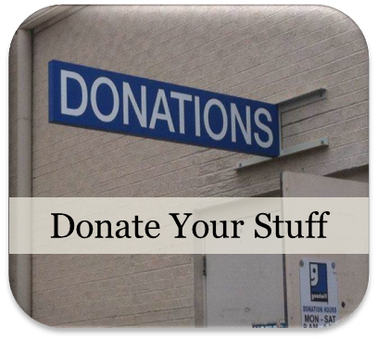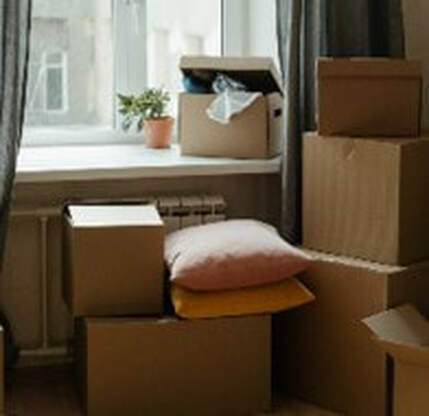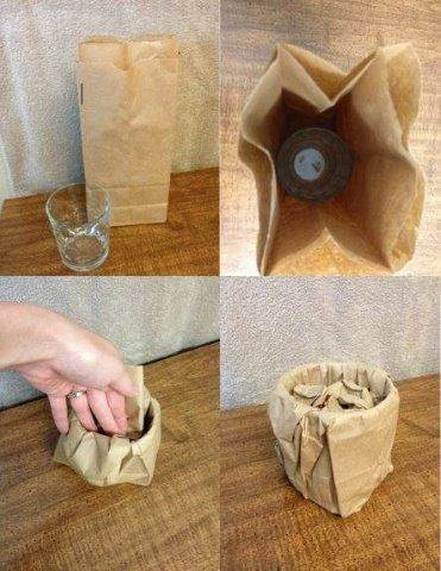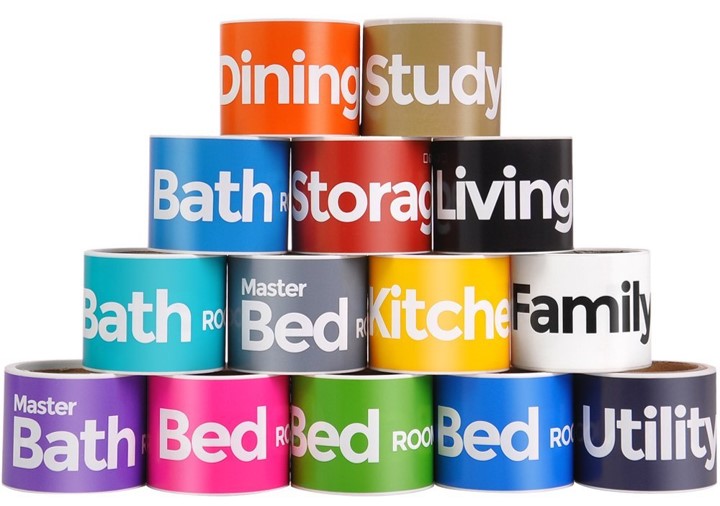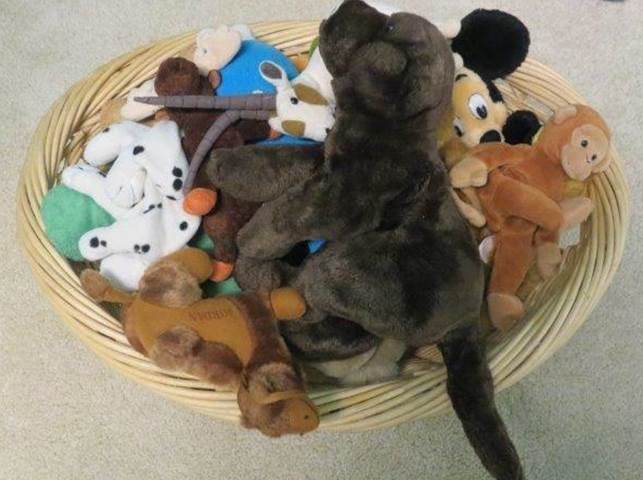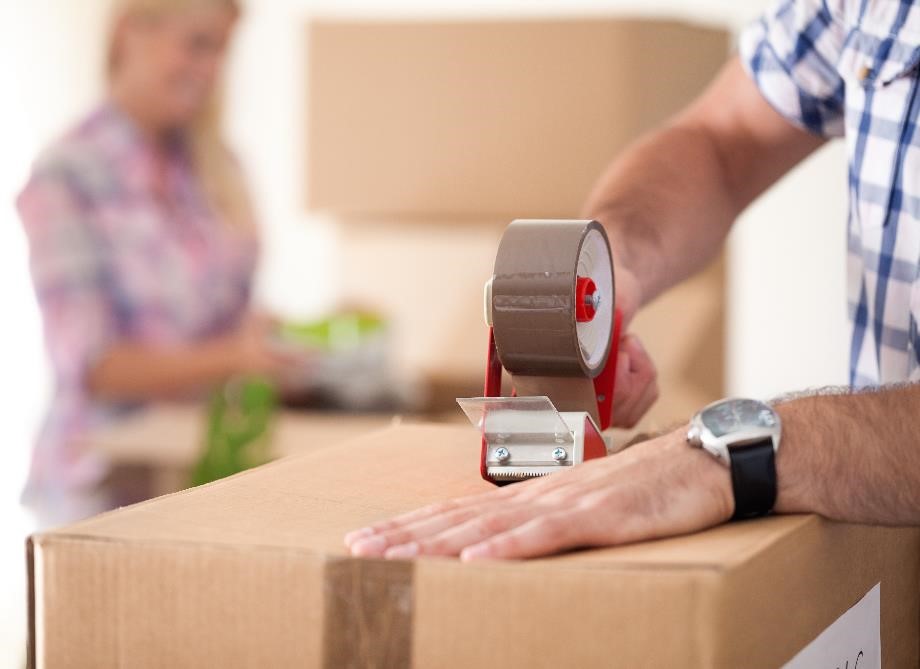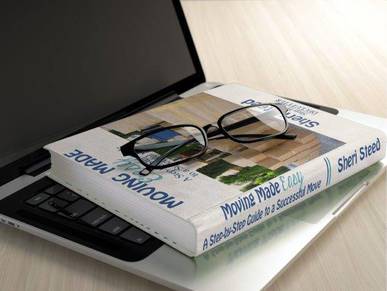|
|
Tips for Packing |
|
If you are moving yourself, these tips for packing will make the experience easier. Save your stuff and your sanity from damage by utilizing the wisdom of experienced movers. Personally, I've moved 16 times in 25 years, but I’m not just drawing on my own experience. I've collected treasures of moving wisdom from around the web. I hope you find them useful on your next move.
Start by Purging
|
|
Before you pack it's important to purge. We purge both before and after every move. That’s not necessarily our intent, but it always works out that way. No matter how thorough we think we've been, some stuff always slips through the cracks.
Purging can be achieved naturally as part of the packing process. As you sort through things to put them in boxes, consider each item carefully. Do you like it? Do you use it? Do you want it? Do you need it? If the answer is no, then the item should go (away, that is). Purging as you pack will help to lighten your load and preserve precious space in your truck.
Purging can be achieved naturally as part of the packing process. As you sort through things to put them in boxes, consider each item carefully. Do you like it? Do you use it? Do you want it? Do you need it? If the answer is no, then the item should go (away, that is). Purging as you pack will help to lighten your load and preserve precious space in your truck.
Gather Supplies
Good places to obtain boxes (and possibly other packing materials) include the following:
- Your own mail – If you have plans to move in the next 3-6 months, start saving any boxes you receive as packages. Also save any packing material that comes in those boxes as well as newspapers, weekly store advertisements and other junk mail which can be used to fill 'holes' in your boxes so that everything fits snugly.
- Neighbors, friends and family – Ask everyone to save their boxes (and packing material) for you.
- New arrivals – Watch for moving trucks in your area. Check with people who are just moving in; ask them if they’d be willing to save their boxes for you. Chances are they’ll be glad for you to take them off their hands.
- Recycle day in your neighborhood – I know when we put out large quantities of boxes for the recycle truck they almost always disappear long before the truck comes by to claim them.
- Local recycling center – It’s worth checking at the local recycling center. If anyone has empty boxes, they do. They may be happy to let you have some. Just be sure to ask.
- Office supply stores and print centers – copy paper boxes are excellent for moving. They’re sturdy, they have removable lids, and many have handles cut into the sides.
- Bookstores – Bookstores are the perfect place for finding boxes specifically designed to ship books (but also good for other stuff).
- Offices, banks and schools –These are also a potential source of copy paper boxes. These businesses also receive large quantities of packages (all of which come in sealable boxes…). When asking at a school, be sure to check with the cafeteria staff as well as the office staff.
- Grocery stores and restaurants –Produce boxes are particularly desirable.
- Bars and Liquor stores – The great thing about liquor boxes is that they often include dividers which work well for transporting glassware.
- Craigslist – Check out the free section to see if anyone in your area has boxes to give away. If not, you may be able to buy them from someone nearby for less than it would cost you to get them from a retailer. Also keep this in mind when your move is over - post your boxes on Craigslist for a little extra cash.
- Freecycle – Put out a plea on Freecycle for empty boxes and other packing materials.
- Social media – Post a request for moving supplies on Facebook or your social media of choice.
- U-Haul – Yes, U-Haul sells boxes, but they also offer a message board where customers can exchange supplies. Just type in your town to see if anyone in your area has materials you can claim.
|
|
Operation Get Boxes |
|
When seeking boxes from a business, it’s a good idea to call ahead. Ask if they have empty boxes (most do) and if they are willing to give them to you (most are). Find out what day they receive deliveries. The best time to get boxes will be late in the day on delivery day after they’ve had time to unpack everything.
Empty boxes take up a lot of room, so businesses are quick to tear them down and recycle them in order to free up space. If they know you are coming to pick up boxes, they may leave them intact, thus saving you from having to tape them back together again.
Empty boxes take up a lot of room, so businesses are quick to tear them down and recycle them in order to free up space. If they know you are coming to pick up boxes, they may leave them intact, thus saving you from having to tape them back together again.
Other packing materials to stock up on include:
- Bubble Wrap – I always keep the bubble wrap that comes in packages we receive in the mail for reuse. Just stash it under a bed somewhere or on a closet shelf until you need it. If your supply of bubble wrap is limited, you can find an assortment of sizes here.
- Stretch wrap
- Packing tape
- Sharpie markers
- Box cutter & extra blades
- Zippered plastic baggies in various sizes
- Cinch-able trash bags
- Furniture sliders
- Hand truck and/or dollie – If you don’t already own one, you can rent them from moving supply places or hardware stores. It’s a small price to pay to prevent damage to both your furniture and your back.
- Packing Paper – In addition to the paper you purchase, look for these alternatives for wrapping and cushioning items for transport:
|
|
|
More Boxes = Better
|
|
The more boxes you can amass for your move, the better. I guarantee it will take more boxes than you think to move your stuff, especially if you are well established with a couple of kids. The estimated number of boxes needed to pack a 2000 square foot home with 8 rooms occupied by 2 adults and 2 kids is somewhere in the neighborhood of 90-100. That may seem like a lot, but it takes 6-8 dish pack cartons (typically 18” x 18” x 28”) just to pack the contents of my china cabinet. If you’re collecting your boxes from free sources, you’ll be hard pressed to find many boxes that big.
My point: Error on the side of excess. Better to have too many than too few. You can always recycle or give away what you don’t need.
My point: Error on the side of excess. Better to have too many than too few. You can always recycle or give away what you don’t need.
Get Organized
|
|
Here are some of my favorite tips for packing:
|
Color Code Boxes: The folks at Hire a Helper suggest color coding boxes according to room using Washi Tape – a different color tape for each room - and creating a packing key to keep track of which room is represented by which color. Others suggest colored duct tape, but I prefer this pre-labeled tape designed specifically for moving. Each roll is a different color and bears the name of a different room of the house. You can even purchase sets for 2, 3 or 4 bedroom homes.
|
Label: Another great tip comes from Anna at askannamoseley.com who prints her own brightly colored labels for packing (try these florescent color coded moving labels). In addition to making labels for different rooms in the house, you can create or purchase instructional labels such as ‘fragile’ or content labels such as ‘books’, ‘toys’, and ‘décor’. This saves time having to write the same information over and over again on multiple boxes.
Put Together a Supply Basket: Chelsea at Pink Lips & Teaching Tips recommends creating a packing supply basket. Fill a plastic tote with all the items you need to pack boxes: Sharpies, labels, scissors, tape for boxes, a screw driver, zippered baggies, a utility knife, etc. Carry your tote with you from room to room as you pack and you’ll have everything you need at your fingertips.
Put Together a Supply Basket: Chelsea at Pink Lips & Teaching Tips recommends creating a packing supply basket. Fill a plastic tote with all the items you need to pack boxes: Sharpies, labels, scissors, tape for boxes, a screw driver, zippered baggies, a utility knife, etc. Carry your tote with you from room to room as you pack and you’ll have everything you need at your fingertips.
Pack a First Night Box: Pack a box or two with all the essentials for your first night in a new home. This particular tip has been emphasized by numerous tip-givers around the internet, but I particularly like this list provided by Allied. I would add a basic tool set to the list they provide for putting together beds, etc. Label your first night box with a bold, bright color so that it’s easily identifiable among the sea of boxes, or use a clear bin to house those items so that it will stand out amongst the cardboard.
|
|
How to Pack Books, CDs, DVDs, and Video Games |
|
Check out these brief instructional videos which demonstrate the safest way to pack books, CDs, DVDs, and video games.
How to Pack CDs, DVDs and Video Games
How to Pack Books
How to Pack CDs, DVDs and Video Games
How to Pack Books
Getting Started
Once you've gathered supplies and established a system for organizing your move, it’s time to start packing. Here are some resourceful tips for making sure your stuff arrives unharmed and is (relatively) easy to put away.
Use Soft Stuff for Padding and Wrapping
|
|
|
Sheets, towels, tablecloths, cloth napkins, dish towels, pot holders, blankets, pillows and clothing can all serve as cushion for your breakables. Got a little hole in a box that’s too small for anything? Fill it with a pair of socks or a rolled up dish towel. Stuff kitchen knives inside mitten-style pot holders for protection. Wrap cookie sheets and muffin tins in pillow cases. Stuff boots with socks to help them hold their shape. Using what you have to cushion the contents of your boxes saves not only space but also money.
|
Have your kids got a ton of stuffed animals? Instead of filling a box with stuffed animals, use the stuffed animals as filler in a variety of boxes. They are delightfully malleable, they weigh practically nothing, and they provide excellent cushioning for breakables.
Pack Your Luggage
|
|
Put any extra luggage to work by packing it with your stuff. It's a super convenient way to transfer packed items to the moving track as most luggage comes with built-in wheels! That said, I do feel it necessary to offer one note of caution with regard to this tip. The contents of a suitcase shift dramatically between lying flat and being rolled around in an upright position. Even the contents of a suitcase that seems full can, and often do, shift toward the end where the wheels are located. I recommend using luggage for packing non-fragile, bulky, or naturally malleable items. If you are packing anything that could potentially be damaged, be sure it is well cushioned inside the suitcase.
Utilize Empty Space
|
|
Save space and protect small stuff by packing it inside bigger stuff. Fill your crockpot with spices. Fill your laundry hamper with pillows. Use buckets, laundry baskets, trash cans, and other containers to transport smaller items. Look for items or combinations of items that fit snuggly and don’t rattle around inside the container. Movement equals damage in a move.
Cover Your Clothes
|
|
Instead of removing hanging clothes from their hangers and packing them in boxes, wrap a large plastic trash bag around several hanging items as Emily from The Wicker House recommends. Not only will this protect your clothes from dust and damage, it will also save space in your boxes, and save you tons of time. Just don’t overstuff the trash bags. Clothes should fit comfortably inside in order to prevent the bag from tearing. Try laying trash bags of hanging clothes inside empty dresser drawers, cedar chests or other case goods on the moving truck to further protect them during transport.
Bag the Small Stuff
|
|
A great way to save time and effort when moving is to ship the contents of drawers in zippered plastic bags. This keeps items together that belong together making unpacking easy. It also prevents small stuff from getting lost amid the jumble of crumpled paper. Do this with kitchen, bathroom and desk drawers.
Wrap it up
|
|
Another good trick is to wrap certain items in stretch wrap or plastic wrap to hold them in place. Leave silverware in its tray and wrap the whole tray. Wrap plastic drawers and other small containers to seal them up so their contents don’t spill out in transport.
Fill the Voids
|
|
Make sure all your boxes are completely full. Partially full boxes crush easily (along with their contents). Stuff wadded up paper, empty plastic grocery bags, socks, or linens in to fill the empty spaces and help your boxes hold their form.
Wrap Your Mattress
|
|
If you don’t have access to the gigantic mattress boxes that movers use, a good alternative from Lilly at Listotic is to wrap fitted sheets around both sides of your mattress (top and bottom) to protect it from dust, dirt, and potential damage. I recommend using older sheets that you don't mind parting with as there is always a chance that the sheets will snag on something in the truck and be damaged.
Snap a Picture
|
|
Photograph electronic hook ups so that you can easily remember how to recreate them at your new home. This tip was particularly helpful for us when my husband (the one normally in charge of setting up electronics) was in Iraq.
Pack Like a Pro
|
|
The work doesn't stop when all the boxes are full. Arranging items on a moving truck is an art form. By imitating the practices of professional movers, you can increase the likelihood that your things will arrive undamaged at your new home. For a great resource on loading a moving truck visit U-Pack’s Loading Tips.
Put these tips for packing to good use on your next move and make it your best move ever.
This page contains affiliate links.
|
|
Check Out My eBook |
|
|
If you found this information useful, you're sure to love Moving Made Easy: A Step-by-Step Guide to a Successful Move. It contains all the moving information available here on the website plus tons of additional information on topics like preparing your family for a move, budgeting for a move, and moving with pets. Also included are 10 printable checklists to help you organize every aspect of your move. Get your copy today!
|
Please Share
|
|
If you liked this page, please share it on social media, and leave me a comment in the section below. I would love to hear your moving tips.
Proudly powered by Weebly


